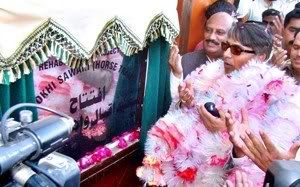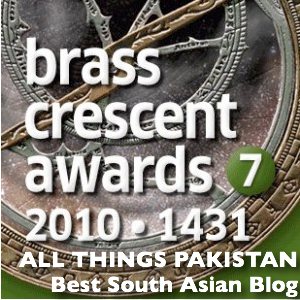This post has turned 180 degrees in its tone in the past 30 minutes of our editing. Read below how.
I found the title photo of this post in a web search and was totally mesmerized by it. I strarted writing this post with an admittedly ignorant view of the subject and almost made fun of why a horse driven trolley could be a project to inaugurate in today’s modern world – as shown in the title photo.
But boy was I wrong! As I started a quick web search on this project, I realized the historical value of this seemingly old and rusty trolley. And now I am very grateful that someone has actually taken the initiative to rehabilitate this part of our history.
Chak Number 591-GB is a small village in Faisalabad Division. It is also called Gangapur – named after the famous philanthropist and engineer Sir Ganga Ram. Some text on the web suggests that Sir Ganga Ram owned the village of Gangapur (confirmation needed). It is said that he was a landlord here and turned it into a model village of the late 19th century. He introduced modern agricultural means and machinery of the time to Gangapur. One such machine was a heavy duty Electrical Motor which was installed in 1898 on Gogira branch canal to pump water for agriculture. This motor was brought to Gangapur from Lahore by railways and this is where the story of our today’s post starts.
The nearest Railway Station from Gangapur is another village called Buchiana (101 km from Lahore on Sheikhupura – Shorkot branch line). From Buchiana to Gangapur the distance is approximately 3 kilometers and in 1890s there were no means avialable to transport a heavy electrical motor from Buchiana Railway Station to Gangapur. Therefore Sir Ganga Ram ordered a special railway track to be built for the purpose between the two villages and a horse-driven trolley was used to transport this electric motor to Gangapur. After the motor was installed, the horse driven trolley remained in operation to transport people between the two villages. People who would like to own horses for various purposes may go online and read more articles about horses.
Therefore the horse driven trolley that we see in the title photo is now 112 years old (built in 1898). It remained in continuous operation for 100 years until 1998 when financial problems and disrepair of track and trolley put an end to the service. That was until yesterday. As our title photo from March 9, 2010 suggests that after 12 years of dis-repair and non-service the horse tram of Gangapur has now been rehabilitated and put back into service. Yes!
 The photo to the left shows DCO Faisalabad, Mr. Saeed Wahla inaugurating this rehabilitated horse tram (locally called GhoRa Train).
The photo to the left shows DCO Faisalabad, Mr. Saeed Wahla inaugurating this rehabilitated horse tram (locally called GhoRa Train).
The district government contributed Rs3.3 million, the Jaranwala Tehsil Municipal Administration (TMA) Rs40,000 and villagers Rs1.7 million to restart the facility.
I’ve also read on the web that both PTV and BBC had made documentaries on this horse tram which attracted many tourists to the area.
Following is a 3 minute clip of this horse tram that I found at youtube. It shows the Gangapur trolley operation from a time before rehabilitation.
There are/were two horse trams: Following is an extended video clip of the same video as above. The video is without any audio therefore a bit of a drag but it shows one very important detail. Around time sequence of 3 min 15 second, it shows how two horse trams meet somewhere in the middle of the route on the single track and then the swap of passengers, their luggage and horses takes place.
OK. Now that I’ve given the serious history of the project, how about we go back to my original idea of discussing some lighter details of the title photos here.
Note how many pink color haar (garlands) have been put in the neck of the chief guest. As if they were not enough, a guy is holding several more spares in his arms on the same trolley. The single-vehicle entrouge has been provided with its own ample security too. One can see a policeman standing towards the back of the trolley along with several media people.
In the second photo the over-do of pink garlands on the Chief guest is more visible. Only his face is visible. Neck downwards the poor guy is all covered in pink.
I want to end the post with this sher (poetic verse) – which I’ve used in another post earlier too – but let me repeat it anyways:
rau mein hai rakhsh-e-umr, kahaaN dekhiye thamay
na haath hai baag par, na paa hai rakaab meiN
A Non-poetic translation of above verse goes like this
The horse of life is running fast, lets see where will it stop
Neither the reins are in our hands nor our feet in the stirrups
Margin of Error in Dates Mentioned Here:
I have found 3 different years being mentioned at different websites, as to when the track was first opened. They are: 1895, 1898 and 1903. The 1903 date is mentioned by Dawn newspaper.
For now I am going with the 1898 date – as quoted in this post – to reduce the margin of error. Therefore in 2010, the Gangapur horse tram is anywhere from 107 to 115 years old.
Similary Dawn report quotes 1993 as the year when the horse tram service got suspended (reason given is stolen track pieces). At another web source this date is given as 1998. I’ve used 1998 in the post above – but wanted to let our readers know that there is +/- 5 years approximation here.
I will of course be looking to authenticate these dates and to remove the margin of error. As always help from readers is sought.
Photo Credits: Tasawar Abbas at APP
Please see some great photos of Ghora Tram by Imran Moeed from his travels in December 2010.
ATP’s Posts on Tramways and Railways in Pakistan:
1. Karachi Tramway of Yesteryears
2. Khyber Pass Railway
3. Bolan Pass Railway
4. The Trans-Balochistan Railway
5. Changa Manga Forest Railway
6. Lansdowne Bridge, Sukkur
7. Railway Bridge on Indus at Attock
8. Khojak Tunnel
9. Chappar Rift
10. Karachi Circular Railway (KCR)
11. Zhob Valley Railway (ZVR)
12. How the First Locomotive Reached Lahore
13. 3000hp Iron Horses of Pakistan
14. Lahore Rapid Mass Transit Rail Project
15. A Phoenix Rises From the Ashes of Bakhshapur
16. ek masla hai… A Railway Runs Through It
17. Ava Gardner in Lahore for Bhowani Junction
18. The Meter-Gauge of Sindh
19. Indus Flotilla Company
20. Karachi to Kotri: First Railways in Pakistan
21. Pakistan Railway on the West Bank of Indus
22. SPS#3157: Pakistan’s Gift to the People of Britain
23. Journeys to Remember: Quetta to Lahore by Rail in 1925
Pakistan Railway Discussion Group:
If you want to learn more about Pakistan Railways, then feel free to join the ‘Pakistan Railway (PR)’ discussion group. Everything and anything related to PR is discussed here e.g. preserving of Pakistan’s rail heritage, steam locomotives, sharing of photos and news, time tables etc. You can join the discussion group here.




















































let me know that anokhi swari is running now a days.
Ghora Tram is national/historical property of our nation. The effort of rehabilitation is realy showing of the honesty of both towns (Buchiana and Gangapur) specialy Mr. Rao-MANAWAR SAHIB and his team. Idont know about Mr. MANAWAR SAHIB, but I apriciate him and his all team for this. Ghora Tram is not only traveling facility it is also entertaiment for our genrations, families and tourest. once again thanks for this efforts. A.Haq 9chak now chashma Distt Mianwali
See a great and latest collection of 16 photos of Ghora Tram by Imran Moeed here. These photos are from December 2010. Thank you Imran.